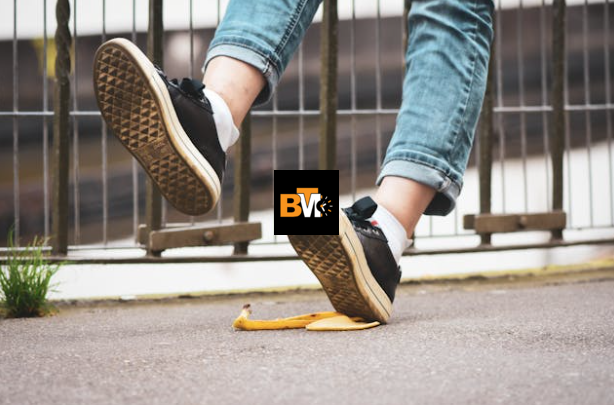Slip and fall accidents are among the most common personal injury claims in Canada. Whether they happen on icy sidewalks, wet floors in shopping malls, or uneven surfaces on private property, these incidents can result in serious injuries and financial burdens for victims.
When someone is injured in a slip and fall accident, they may not immediately know what steps to take or how to pursue compensation. This is where a slip and fall lawyer becomes essential. But what exactly does a slip and fall lawyer do for a client in Canada?
Let’s explore the crucial role of these legal professionals, what services they provide, and how they support clients through complex legal processes.
Understanding Slip and Fall Law in Canada
Slip and fall cases fall under the category of personal injury law. In Canada, these cases are typically governed by the Occupiers’ Liability Acts, which vary slightly from province to province. These laws establish that property owners or occupiers have a duty to ensure their premises are reasonably safe for those who enter. If a person is injured due to the owner’s negligence, the owner may be held liable.
However, proving negligence is not always straightforward. That’s where a slip and fall lawyer comes in—to investigate the circumstances of the accident and help the injured party build a strong legal case.
Initial Consultation and Case Evaluation
The journey usually begins with an initial consultation. Most slip and fall lawyers in Canada offer free initial consultations, during which they listen to the details of the accident and assess whether the case has merit. At this stage, they:
- Gather preliminary information: Where and how the fall occurred, the extent of the injuries, and whether there were any witnesses or surveillance footage.
- Evaluate liability: Determine if the property owner may be held liable under the applicable laws.
- Estimate damages: Calculate potential compensation based on medical costs, lost income, pain and suffering, and other factors.
This initial assessment helps both the lawyer and the client decide if it’s worthwhile to pursue a claim.
Investigation and Evidence Collection
If the client agrees to proceed, the lawyer will begin an in-depth investigation. This includes:
- Photographing the scene of the accident before conditions change.
- Securing surveillance video if the incident was caught on camera.
- Interviewing witnesses who saw the fall or can testify to unsafe conditions.
- Reviewing medical records to link the injuries directly to the incident.
- Consulting experts, such as medical professionals or accident reconstruction specialists, to provide credible support for the claim.
Gathering evidence is essential to establish liability and prove that the property owner failed in their duty of care.
Filing a Legal Claim
Once sufficient evidence is collected, the slip and fall lawyer prepares the necessary legal documentation and files a personal injury claim. This involves:
- Drafting a Statement of Claim, which outlines the facts of the case, the legal basis for the claim, and the compensation sought.
- Serving notice to the defendant (usually the property owner or business entity).
- Responding to defence documents, such as a Statement of Defence, and addressing any counterclaims.
Timelines for filing vary depending on the province. For instance, in Ontario, most personal injury claims must be filed within two years from the date of the incident. A lawyer ensures all deadlines are met to avoid losing the right to sue.
Negotiating with Insurance Companies
Most slip and fall claims are settled out of court. Insurance companies often represent property owners and will try to minimize payouts. A slip and fall lawyer negotiates with the insurer on the client’s behalf to secure a fair settlement.
The lawyer’s role during negotiation includes:
- Presenting the evidence to support the claim and justify the amount being requested.
- Valuing damages accurately by considering not just current losses but also long-term effects like future medical treatment or permanent disability.
- Rejecting lowball offers and making counteroffers based on the client’s best interests.
Since insurance companies have experienced legal teams, having a skilled lawyer levels the playing field and helps protect the client’s rights.
Representing the Client in Court
If a settlement cannot be reached, the case may go to court. In such instances, a slip and fall lawyer will:
- Prepare and submit legal briefs to outline the case for the judge.
- Examine and cross-examine witnesses, including the client, property owners, medical experts, and others.
- Present the evidence in a clear and compelling manner.
- Argue the case according to legal standards and precedents relevant to the jurisdiction.
Litigation is often more time-consuming and complex than settlements, but it may be necessary to ensure the client receives fair compensation.
Providing Emotional and Legal Support
Beyond legal representation, a slip and fall lawyer also provides emotional support. Recovering from an injury is stressful, especially when dealing with pain, medical bills, and lost income. A compassionate lawyer helps ease the burden by:
- Explaining the legal process in simple terms so clients feel informed and empowered.
- Offering realistic expectations about outcomes and timelines.
- Handling communications with third parties to reduce the client’s stress.
This supportive role is often overlooked but is vital to a client’s overall recovery and peace of mind.
Helping Clients Maximize Compensation
Compensation in slip and fall cases can cover a range of damages, including:
- Medical expenses: Current and future treatment, rehabilitation, medication.
- Lost income: Wages lost due to time off work, future earning capacity if the injury results in long-term disability.
- Pain and suffering: Physical pain, emotional trauma, and reduced quality of life.
- Out-of-pocket expenses: Transportation to medical appointments, assistive devices, etc.
A slip and fall lawyer ensures that all potential areas of compensation are identified and properly documented.
Understanding No-Win, No-Fee Agreements
Most slip and fall lawyers in Canada operate on a contingency fee basis, meaning clients don’t pay legal fees unless the case is won or settled. This allows injured individuals to pursue justice without worrying about upfront costs. The lawyer’s fee is typically a percentage of the settlement or court award.
This arrangement benefits clients who may otherwise lack the financial resources to take legal action, making justice more accessible.
When to Contact a Slip and Fall Lawyer
Not every slip and fall incident warrants legal action. However, contacting a lawyer is advisable if:
- The injury results in significant medical expenses or long-term disability.
- The property owner refuses to accept responsibility.
- The insurance company denies or undervalues the claim.
- The incident occurs in a public or commercial space where liability is unclear.
Time is critical. The sooner a lawyer is contacted, the better the chances of preserving evidence and building a solid case.
If you’ve been injured in a slip and fall and are unsure of what to do next, click here for slip and fall lawyer assistance and protect your rights.
Final Thoughts
Slip and fall lawyers in Canada play an indispensable role in helping injured individuals seek justice and compensation. From the initial consultation and evidence collection to negotiation and litigation, these legal professionals handle every aspect of the case with precision and care. Their goal is to ensure clients receive fair compensation and can move forward with their lives after a traumatic experience.







Leave a Reply